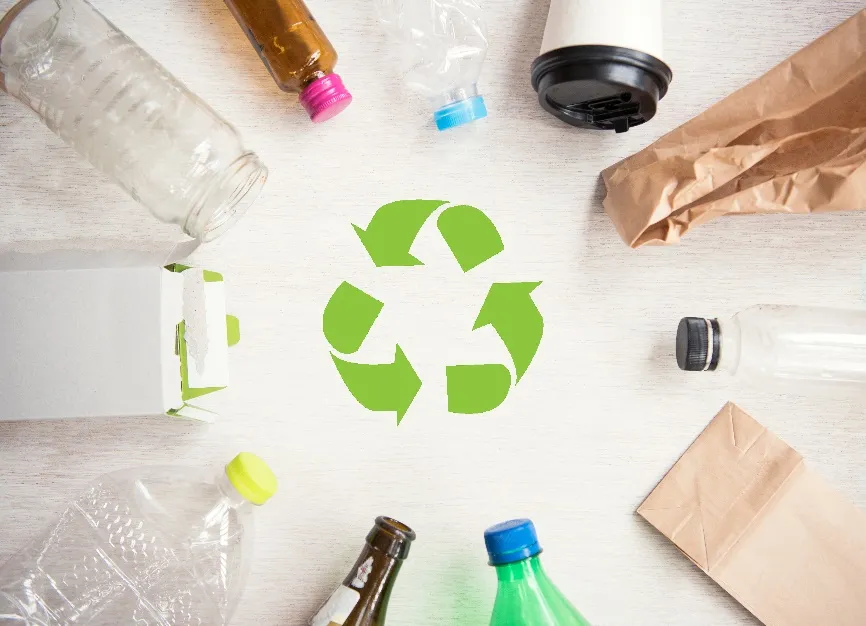Plastic as a material is practical. It can be used to create countless products useful in daily life and beneficial to economies. As they are made to last longer or improperly disposed of, plastic products contribute to the world’s pollution:
- Geneva Environment Network’s Plastics and Climate Change recognizes the link between plastic pollution and climate change, evidenced by the emission of greenhouse gasses throughout a plastic’s life cycle.
- Also, single-use plastic products like bottles and bags that end up in seas, rivers, and waterways can harm humans, animals, and plants. As these plastic products disintegrate into smaller particles or microplastics and spread on land, water, and air, they are even harder to contain and manage. Not to mention that plastic goods take time, like centuries, to decompose.
In light of the realities and calls for a more eco-friendly approach to manufacturing and using (or recycling) plastic products, these innovations in plastics have emerged. Take a look at these promising developments that would shape the future of plastic as we know it.
1. Bioplastics
Bioplastics is an umbrella term referring to a variety of plastics that are fully or partially biobased and or biodegradable, according to SPI: The Plastics Industry Trade Association Bioplastics Division. While a bioplastic can be both biodegradable and biobased, these two terms are not interchangeable, as gleaned from the cited document:
- Biobased bioplastic is partially or fully based on a renewable resource. Sugar cane and corn are common source materials of biobased bioplastics.
- Biodegradable bioplastic fully degrades through natural biological activities or environments and gets broken down into carbon dioxide, water, etc.
2. Compostable Packaging
Compostable packaging is designed to biodegrade in an industrial (or home) composting setting, as it contains materials that bacteria and other microorganisms can break down.
Compostable food packaging is touted as a sustainable alternative to its conventional counterpart which gets thrown out right after use and ends up in a landfill or incinerator if not recycled or composted.
For their food products labeled as compostable, some manufacturers use plant-based materials. An example is cutlery which has CPLA and TPLA, which are variants of polylactic acid that can be sourced from corn and other natural resources.
3. Recycled Plastic
Injection molding is one of the most popular ways to make a wide range of plastic products or parts. For high-volume production, a hot runner system that includes heated sprue bushings is used to process suitable resins.
Recycled plastic is now an option in manufacturing plastic goods. Manufacturers have venues for tapping ethically sourced recycled plastic for new consumer products. One example is this platform that connects brands looking to make sustainable packaging to fair-trade recycled plastic. This is also another source of responsibly obtained post-consumer resin or recycled content (PCR) in Asia.
There is also a financial incentive to use recycled plastic among manufacturers in some countries; in the United Kingdom, plastic packaging components containing at least 30% recycled plastic may be exempt from the plastic packaging tax.
4. Recyclable Consumer Packaging
Consumer goods with recyclable or reusable packaging are the present and the future.
A global company recently introduced a recyclable plastic tube for its toothpaste, made from HDPE or High-Density Polyethylene, an easy-to-recycle material. The consumer goods company has declared its sustainability strategy that includes aiming for “100% recyclable, reusable, or compostable plastic packaging by 2025.”
Another consumer goods giant created a recyclable shampoo bottle made from beach plastic and touted it to be the first in the world. The company also states its 2030 goals of making its consumer packaging 100% recyclable or reusable and reducing the use of virgin petroleum plastic in its consumer packaging by 50%.
This global consumer goods company has a refillable deodorant aimed at cutting plastic use. This is in line with the multinational corporation’s easy-to-remember framework for its plastic packaging goals: less plastic, better plastic, no plastic.
5. Plastic Brick
It is a brick from plastic trash. This eco-friendly brick from Kenya is made from household and industrial plastic. The brick is already in use on roads and may just be used to construct a home, as a prototype to replace or complement standard construction materials is in development.
A similar invention in India involves a waterproof and lightweight brick from single-use plastic waste and more. The startup responsible intends to offer the technology used in making those eco-friendly bricks.
Other countries also have their versions of plastic bricks, turning plastic waste into products of practical value.
Plastic Fantastic
Plastic has changed how people live. These innovations in and on plastic prove that the versatile material continues to undergo changes to respond to challenges, particularly the plastic waste problem and reliance on fossil fuels to make plastics. Compostable, biodegradable, and recyclable options are becoming available for food and consumer goods packaging. Recycled plastic can be used to make new things like packaging and building materials.
To be fair, the examples here are not without criticisms, drawbacks, or limitations. The degradation of biodegradable plastics is one. Labels found in “eco-friendly” plastic products can be confusing to consumers. Not all plastics can be recycled—plastic recycling is a multifaceted matter—and recycling facilities are not readily accessible anywhere.
Still, these innovations prove that the world can shape plastic into something useful with sustainability in mind.

